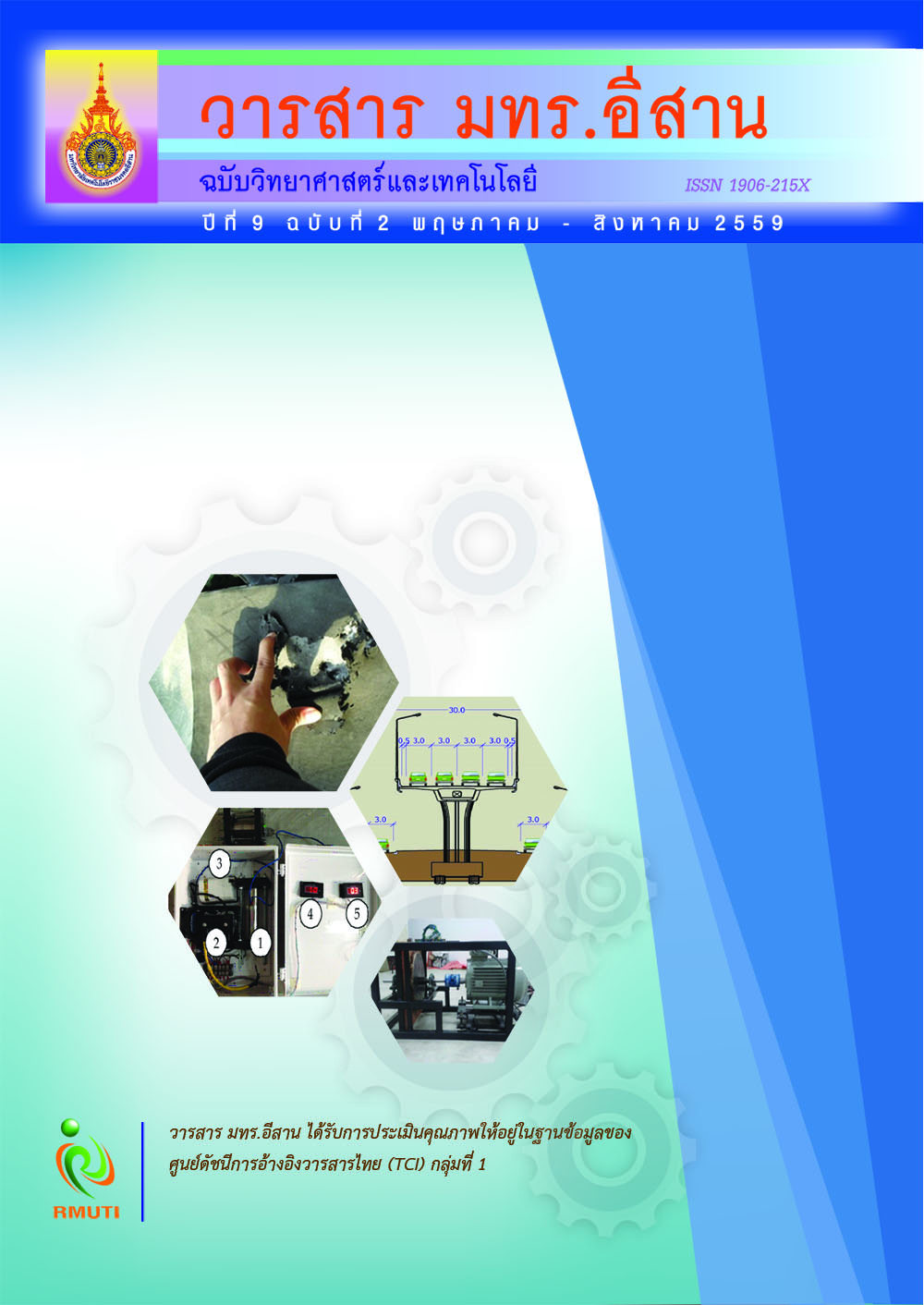Histopathological and Cytological Alterations of Leukocytes in Hybrid Catfish Infected with Aeromonas sp. Collected from the Market in Surin Province
Main Article Content
Abstract
The aim of this study was to isolate bacteria from hybrid catfish and then identify by
morphological and biochemical characterization. The results indicated that bacteria
isolated from hybrid catfish was Aeromonas sp. After histological study was performed,
the alterations and damages of tissues were found in all organs studied including gill,
liver, stomach, intestine and kidney. In gill, the alterations were damaged secondary
lamellae. Moreover, vacuole degeneration and necrosis of hepatocytes were observed in
the liver tissue. Necrosis of intestinal mucosa was found, and cell lesion occurred in intestine
and stomach. Additionally, glomerulus was deformed and necrosis also occurred in the
kidney. The results of cytological study in the leukocytes of infected hybrid catfish
indicated that the leukocytes consisted of monocyte, and neutrophil which were higher
than that of the control. In conclusion, Aeromonas sp. could be isolated from infected hybrid
catfish. It was found that this bacteria caused the alteration in fish tissue and leukocytes.
Article Details
References
Castro-Escarpulli, G. (2005). Aeromonas Hydrophila Clinical and Environmental
Ecotypes as Revealed by Genetic Diversity and Virulence Genes. FEMS Microbiology
Letters. Vol. 242. No. 2. pp. 231-240
Alagappan, K.M., Deivasigamani, K., and Sakathivel, S. (2009). Histopathological
Alterations in Estuarian Catfish (Arius maculatus; Thunberg, 1792) due to
Aeromonas hydrophila infection. World Journal of Fish and Marine Science.
Vol. 1. No. 3. pp. 185-189
Arnold, J.E. (2009). Hematology of Fish: WBC and RBC Cell Morphology. Proceedings
of the ACVP/ASVCP Annual Meetings - Monterey. California, USA.
Austin, B. and Austin, D. A. (1999). Bacterial Fish Pathogens, Diseases of Farmed and
Wild Fish. (3rd Edition). Chichester: Springer Praxis.
Awan, M.B., Ahmed, M.M, Bari, A. and Saad, A.M. (2005). Biochemical Characterization
of the Aeromonas species Isolated from Food and Environment. Pakistan Journal
of physiolology. Vol. 1. pp. 1-2
Bancroft, D., Stevens, A. and Turner, R. (1996). Theory and Practice of Histological
Technique. (4th edition). Melbourne: Churchill Livingstone
Boonchuwong, P. (1995). Options for Coastal Resources Management: A Case Study on
Small on Small - Scale Fisheries and Shrimp Cultivation in Pak-Panang Bay.
Southern Thailand. Socio - Economic Issues in Coastal Fisheries Management,
Proceeding of IPFC Symposium. 23 - 6 November, Bangkok, Thailand
FAO. (2011). Fishstat Plus Verion 2.30. Access (1 August 2011). Available (http://www.
fao.rog/fi/statist/FISOFT/FISHPLU.asp)
Genten, F., Terwinghe, E., and Danguy, A. (2009). Atlas of Fish Histology. New Hampshire:
Science Publisher
Noor El Deen, A.I., Nagwa, A. E., Atta, S. and Abd El Aziz, M.A. (2010). Oral Vaccination
of Nile Tilapia (Orechromis niloticus) Against Motile Aeromonas Septicemia.
Nature and Science. Vol. 8. No. 2. pp. 21-26
Rehulka, J. (2002). Aeromonas Causes Serveskin Lesions in Rainbow Trout (Oncorhynchus
mykiss): Clinical Pathology, Heamatology and Biochemical. Acta Veterinaria
Brno. Vol. 71. Issue 3. pp. 351-360
Tavares-Dias, M. and Moraes, F.R. (2006). Hematological parameters for the Brycon
orbignyanus Valenciennes, 1850 (Osteichthyes: Characidae) intensively bred.
Hidrobiol gica. Vol. 16. No. 3. pp. 271-274
Tripathi, A. (2014). Cytological study on the leukocytes of selected fresh water fishes of
India. International Journal of Fisheries and Aquatic Studies. Vol. 2. No. 1. pp. 17-23

